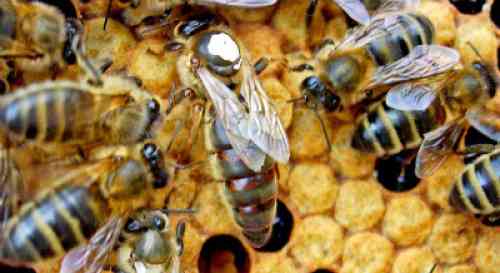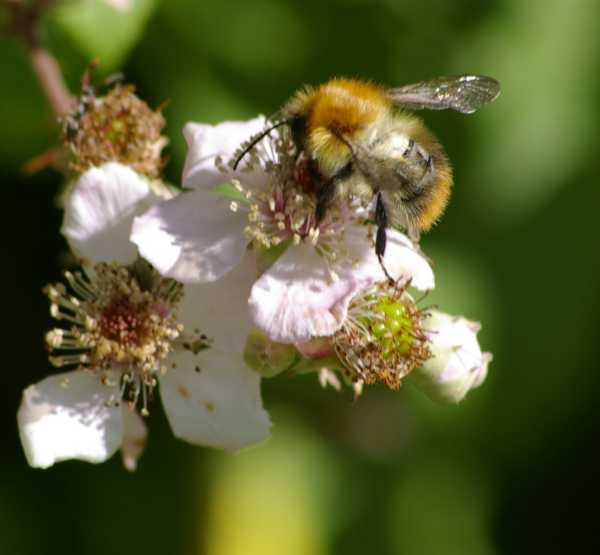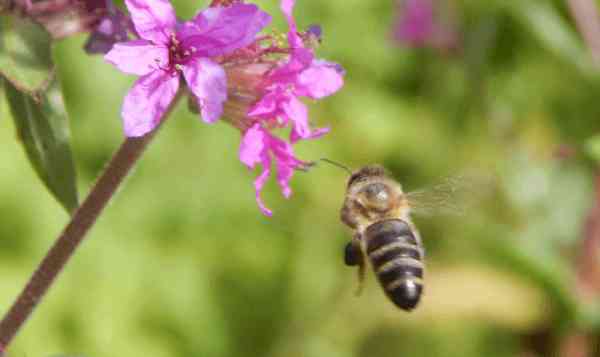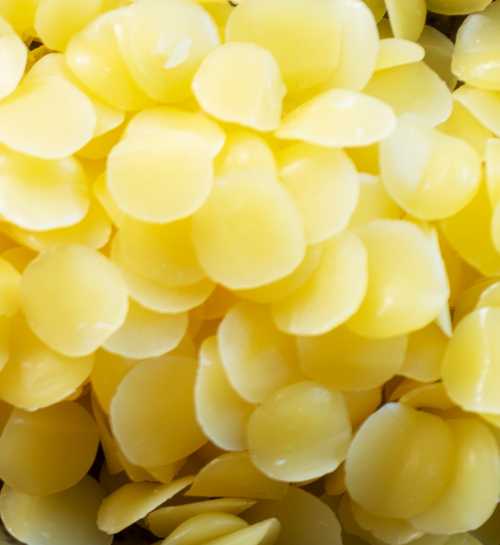Honey Bee Mating Behaviour
In order to be ensure the future survival of honey bees, the honey bee queen must mate with drones, so that she can lay eggs from which new female workers and queens can be raised.
To do this, the queen leaves the nest or hive and embarks on a 'mating flight' to meet with potential drones.
About
Honey Bee Mating Behaviour
To mate, the virgin queen honey bee leaves the hive or nest. She will have taken several earlier, short flights which will have strengthened her wings.
When ready to mate, she flies to what looks like a mini-swarm of male honey bees (drones), called a drone congregation area or drone assembly area.
Drones mount the queen mid-flight (high in the air).
The queen honey bee will
mate several times, and research has indicated between 6 and 24 times
during a mating flight (1).
Each time the queen mates, she receives about 6 million spermatozoa from each male into her oviducts, from where 5.3 – 5.7 million spermatozoa are transported to the spermatheca.
The honey bee queen may take two or three mating flights. Once the queen’s spermetheca (sperm sac) is full of sperm, the sperm will last her entire egg-laying lifetime (2).
In the beautiful, slow-motion video clip below, you can watch a queen honey bee mating with a drone.
Do Male Honey Bees Die
After Mating?
Yes.
During mating, the male honey bee (drone) inserts his endophallus into the queen. After mating successfully, the drone attempts to fly away, but the endophallus remains in the queen, such that the lower half of his abdomen will be ripped and he will die.
However, in the process, the drone will be leaving behind what is called a ‘mating sign’ in the queen. The mating sign is part of the drone endophallus and mucus.
Other drones will however, mate with the queen, and in doing so, will also attempt to remove the mating sign already in place, and may or may not be successful in doing so.
What Happens Next?
3 days after returning permanently to the colony, the honey bee queen begins to lay eggs.
What Is A 'Queenright' Colony?
Queenright colonies are honey bee colonies in which there is a queen capable of laying eggs which are fertile. She will be able to communicate this to workers in the hive or nest, by emitting pheromones.
This is important because in cases where workers are not happy that the queen can produce lots more fertile eggs from which the next generations of honey bees will emerge, then the colony will rear a new queen to replace the old one. This is called supersedure.
It must be remembered that the honey bee colony is an interdependent super organism. This means that in order to ensure its success, as well as a productive queen, there must be an appropriate number of workers and drones to perform the various functions of the colony, and as such, the queen is relied upon to ensure this is the case.

Do worker honey bees mate?
Workers do not mate, but they may sometimes lay eggs which, if allowed to develop into adults, will be male.
Honey Bee Mating
Optimization (HMBO)
Did you know, that the
mating behaviour of honey bees has been studied and converted into algorithms
(formulas) in order to be applied to human problems?!
This is known as Honey Bee Mating Optimization (HMBO).
Honey bee mating optimization algorithms have been used to develop solutions to school timetabling problems (3), automated meter reading solutions (4), and water resources management (5).
Learning from nature is certainly not new, and honey bees have inspired and influenced research into topics ranging from the molecular structure of benzene, to the floors of Concorde (the building structure for which mimics honeycombs to provide strength and lower weight).
Further reading:
Do bees have X and Y chromosomes?
Refs:
1. Queen
mating frequency in different types of honey bee mating apiaries; Peter Neumann;
Robin F A Moritz; Jobvan Praagh; Vol. 38 (1-2) pp. 11-18; June 1999.
2. Polyandry in Honey Bees (Apis mellifera L):
Sperm Utilization And Intracolony Genetic Relationships (citing Kerr et al 1962); Harry Laidlaw Jr, robert Page Jr; Genetics 108: 985-997 December, 1984.
3. A honey-bee mating optimization algorithm for educational timetabling
problems; Nassar Sabar, Masri Ayob, Graham Kendall, Rong Qu; European Journal
of Operational Research, Volume 216, Issue 3; Pages
533–543, 1 February 2012.
4. Application of
Honey Bee Mating Optimization algorithm to load profile clustering; Gavrilas,
M. ; Gh.Asachi Tech. Univ. of Iasi, Iasi, Romania ; Gavrilas,
G. ; Sfintes,
C.V.; Computational Intelligence for
Measurement Systems and Applications (CIMSA), 2010 IEEE International
Conference on 6-8 Sept. 2010;
113 – 118.
5. Honey-Bees Mating Optimization (HBMO)
Algorithm: A New Heuristic Approach for Water Resources Optimization; Omid Bozorg Haddad,
Abbas Afshar, Miguel A. Mariño; Water Resources Management; Volume 20, Issue 5, pp 661-680,
October 2006.
If you found this page helpful or interesting, I'd really be grateful if you would share it with others - if not this page, perhaps another, such as Gardening For Bees.
Thank you so much :) .


